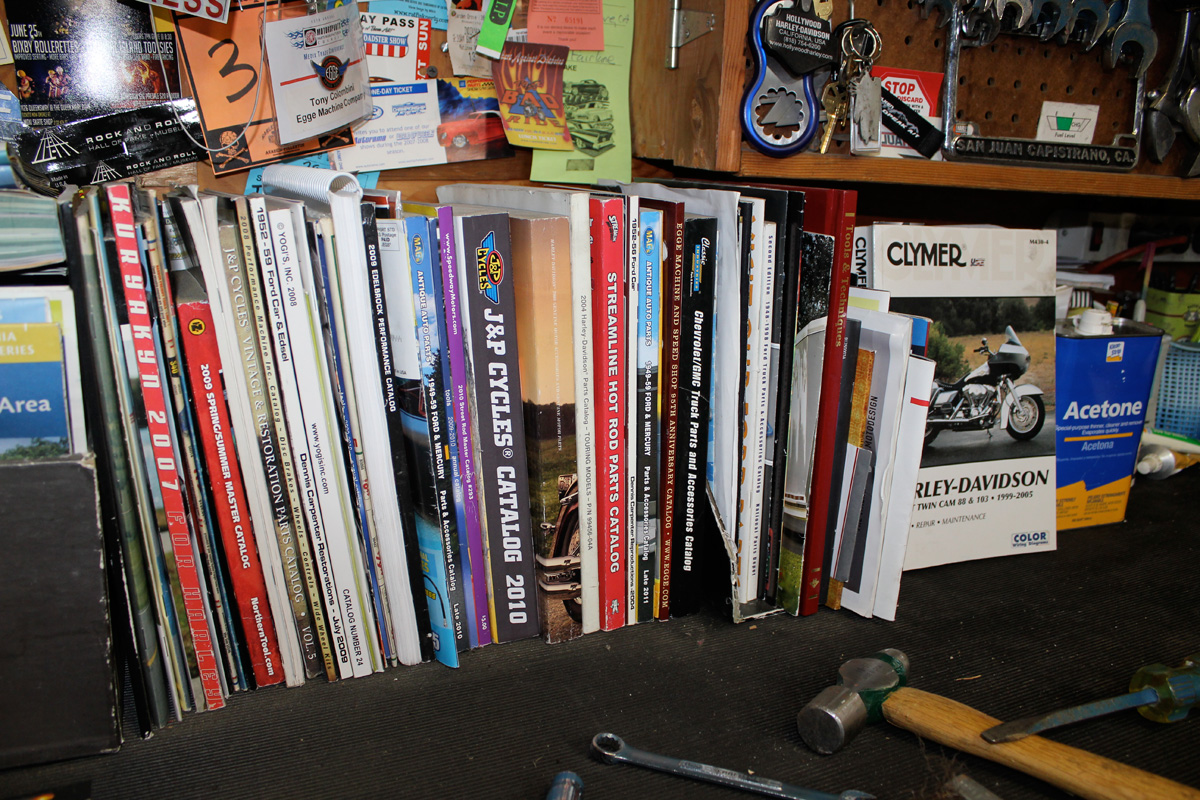 Those of you who know my background know I have had the opportunity to work with talented crews in developing some of the best catalogs in the Automotive Aftermarket. Creating a catalog with 1000 pages full of restoration/performance parts for the Chevrolet Camaro for instance, has taught me quite a bit about Catalog Design. I bring with that the experience and science I learned with Menu Design from my previous practice. I have also used many catalogs (as I am sure you have too) to build various projects. I look to these catalogs with a critical eye and find myself having to do MORE research because, not only did the catalog not answer the questions I have about a part, but actually created MORE questions. Uggh.
Those of you who know my background know I have had the opportunity to work with talented crews in developing some of the best catalogs in the Automotive Aftermarket. Creating a catalog with 1000 pages full of restoration/performance parts for the Chevrolet Camaro for instance, has taught me quite a bit about Catalog Design. I bring with that the experience and science I learned with Menu Design from my previous practice. I have also used many catalogs (as I am sure you have too) to build various projects. I look to these catalogs with a critical eye and find myself having to do MORE research because, not only did the catalog not answer the questions I have about a part, but actually created MORE questions. Uggh.
Here are some of the lessons I’ve learned and hopefully will help you and your company to build a better catalog.
Clarity and Consistency
It goes without saying; your catalog must be clear and concise. In order to take the risk quotient out of the purchase decision, the user has to feel confident in the description of the part. Be clear about what the part is and how it is used. Real estate on catalog pages are valuable and having the proper information, clearly stated and easily understood is paramount! Be consistent on how the information is presented, location with the photo of the part, consistency in the copy form; use, features, benefits, options, units and price. Each part description must be consistent to help in the communication about the part and actually becomes part of your brand ethic.
Does your catalog supply enough information on the parts to help the user make an informed purchase decision? Keep your marketing copy to a minimum (they already have your catalog in their hands) and give all the facts. Be sure to be truthful about your claims. Many garages have a computer on the workbench too now to help them search for tips, techniques and yes parts. They are able to spot a mis-truth at a moments notice.
Tool
I have my catalogs on my workbench. A catalog is just as valuable a tool for any project as a good box wrench. How many times have you struggled with a project when you aren’t using the right tool? Think of your catalog as a tool the DIY’er will be reaching for to find the right part to complete their project.
Think of how your catalog will be used. If someone is replacing the front clip of their Nova, ALL the parts needed for the replacement should be listed, and/or referenced. For example, in the copy for the front fender, have a reference for the location of associated parts such as bolts, emblems, tools needed in other parts of the catalog. This is easy to do online with exploded diagrams and hot-links over each part. How would you do it in a printed catalog? Same exploded diagram with part/page numbers of the associated parts listed.
Why would you take up valuable real estate turning your catalog into a repair manual? My answer is that you will save money on tech center calls, returns, build more loyal customer base and keep them from turning to other forms of research and purchasing.
Availability
Another no-brainer is availability. Are the parts in your catalog available? I have seen catalogs in the past that are complete in line, however some parts listed in the catalog are obsolete and no longer available, anywhere. It is important to take those products out. Sure there are always products that due to circumstances may not be available for the moment. Yes, keep those parts in. In-fact, state expected time for availability. Being honest up-front again will gain you respect and a more loyal customer base. However, if you know of products which won’t be available for quite some time be sure to take them out.
What about special order parts? Be sure to add that to the description, if parts are available on special order, then, add expected time of availability and order requirements.
Support
Customer service is key to surviving in this NEW economy. Being there when the customer has a question, 800 numbers for tech/sales center support is key. A good website with a forum or blog quotient that is easily navigable with search fields for particular subject matters is helpful for those working after your tech center hours.
Be the expert in your field and the qualified customers will come back time and time again. Studies have shown that consumers will pay a bit extra if they have the confidence that there is support to help them with issues. The challenge is finding the fine line between cost and support. Today more than ever, everyone is looking for the best deal. Be sure to show the value-quotient of your support in their efforts on building their dreams with YOUR parts.
Data Technology
Here is something relatively new to the catalog market. There are programs out there, which help develop your catalog based on your sales and inventory data system. Yes, they can link your inventory/sales database with catalog development software so that every part number is consistent in message. Think of it as a bank of data for each part. All instances for that data are sent to various sources such as Purchasing, Shipping/Receiving, Website Content, Sales, Tech and Catalog Development. When the description or photo is changed or updated in one area it updates ALL areas. Pretty spectacular stuff. Also when developing the catalog, it may devote more real estate to the higher selling product, or you can adjust it to feature a product which you need to sell more of. Also, with some programming you can convert your print catalog files to web-ready pdf form with hot links on the part numbers to go directly to the shopping center of your site.
I trust this article got your attention enough to look at your next catalog project with a more critical eye. If you would like more information please don’t hesitate to call, I’d be happy to help. 949-584-5669 or E-mail: Campaigns@BlacktopBranding.com

